A15 Crusader Mark I tank
This British A15 Cruiser Crusader Mark 1 tank can be seen at the RAAC Memorial, Army Tank Museum, Puckapunyal, Victoria, Australia. It is one of only two MkI Crusader tank examples to survive the war. Most people think Crusader followed Covenanter not so Crusader beat Covenanter in production by nearly half a year. This Mk 1 Crusader tank is an extremely early version. It has a Covenanter type headlamp out of the first batch of T15546-T15745 200 vehicles no doubt out of Nuffield at Birmingham.
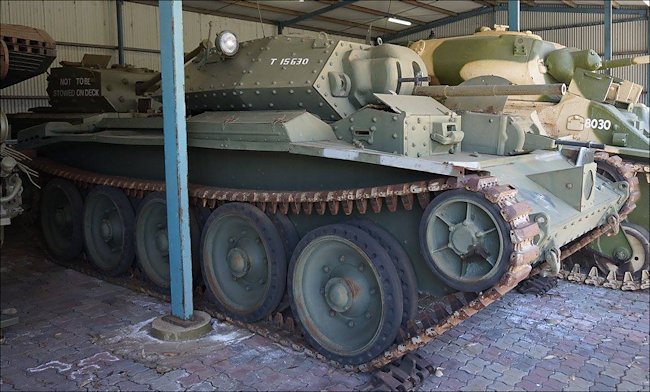
Surviving A15 British Crusader MkI tank at the RAAC Memorial, Army Tank Museum, Puckapunyal, Victoria, Australia (Photo: Jimy Sharp)
Location
The Museum is a three minute walk from Shildon Railway Station. The entrance to the car park is down a road at the junction of Dale Road and Spout Lane in Shildon DL4 2RE, England. The road leads you into a small industrial estate that is next to the museum. The car park is the last turning on the left. The website is www.nrm.org.uk and click on the NRM Shildon link.
Specifications
The Crusader tank was give a number of designations: Tank, Cruiser, MK VI or A15 Crusader MkI. It was armed with a 2 pounder quick firing (2pdr QF) 40mm main gun that only fired AP Armour piercing rounds. The Crusader Mk III was armed with a 6pdr QF (57mm) gun. A Besa machine gun was fitted in the hull and some versions had a second in the turret and a bren gun on the roof of the turret. The early Crusader tanks had a crew of four or in some cases five men. The Mark III Crusader only had a crew of three men. They were protected by armour that only had a maximum thickness on the front of 40mm. This was increased on the Mk II to 49mm and on the Mark III to 51 mm)
The tank was powered by a Nuffield Liberty 27-litre V-12 petrol engine that produced 340 hp. This gave the Crusader a maximum road speed of 26 mph (24 km/h) and off road 15 mph (24 km/h). It had an operational range of around 200 miles (322km) on roads and 146 miles (235km) cross country.
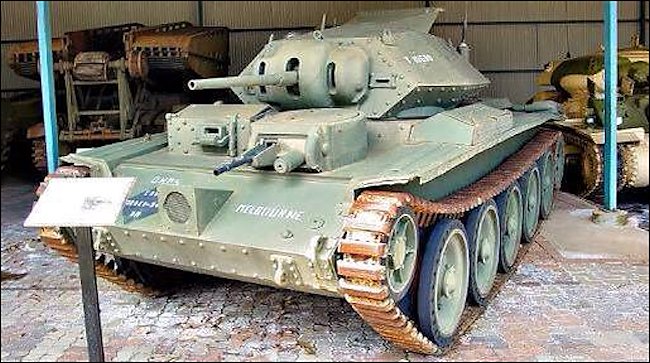
The Crusader Mark I tank at the RAAC Memorial, Army Tank Museum, Puckapunyal, Victoria, Australia (Photo: Jimy Sharp)
The battle of Bir el Gubi 19th November 1941
Roy Cawston was a tank crew member of a A15 Crusader tank belonging No.2 troop, C Squadron, 4th County of London Yeomanry (Sharpshooters) Regiment (4CLY). He was posted to North Africa and taken prisoner when his Crusader takn was knocked out at the battle of Bir el Gubi, Libyia on the 19th November 1941. He wrote down some of his memories in a book called 'Before I Forget - Some Recollections of a Sharpshooter 1939 - 46' Here is an extract:-
C Squadron, 4th County of London Yeomanry (Sharpshooters) Regiment (4CLY) were tasked with attacking a concentration of Italian vehicles at a track intersection called Bir el Gubi, Libya, North Africa. The following is an extract from the diary of the C Squadron, No.2 Troop leader Lieutenant Count John de Bendern.
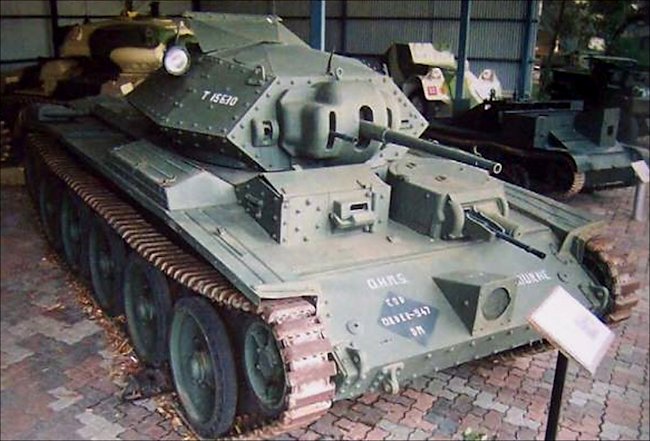
This preserved Crusader Mk I tank was armed with a 2 pdr cannon that only fired AP armour piercing rounds. (Photo: Jimy Sharp)
'13.00 hrs. 2 Troop (up till then Right Reserve) told to come up on right flank. Advanced to about 300 yards ahead of Squadron and charged the encampment firing at lorries and anti-tank positions. Lord Cranley's famous last words over the air - 'Let them have it they're only bloody eyeties!' Shells by now bursting ahead of us. '
'13.10 hrs. Encampment now seen to be enemy strongpoint bristling with anti-tank guns and other artillery well dug-in to position with lorries as decoys. Ominous crack on our left side turned out to be our left track shot away. Started in large circle to left. Heavy thud on right side and something dropped in my lap. Thought it was a shell, but only my fire extinguisher come adrift. Now only about 50 yards away from anti-tank and m/g positions - rattle of machine gun bullets all over the tank. Saw through my visor the sun compass spinning ahead of us in the sand. '
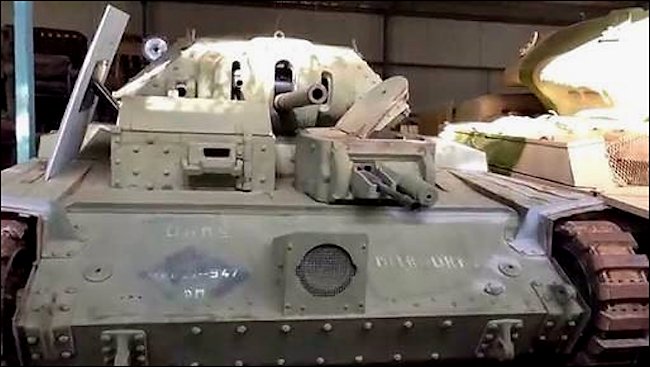
The Crusader Mk I tank was armed with two Besa machine guns: one in the hull and the other in the turret next to the 2pdr gun. A Bren gun was also fitted to the top of the turret as protection from air attack. (Photo: Jimy Sharp)
'Bren gun on turret roof hit. Magazine dropped into turret narrowly missing the Count and Roy. By now made another half-circle away from the enemy. Shells thudding into the rear of tank but apparently having no effect. Commander's periscope hit and fragments of glass showered over Count who also received a heavy blow on head from base of periscope. '
'Two consecutive shots landed by Bill's left ear knocking binoculars case off. Coming round on yet another half circle observed two other tanks knocked out. Saw anti-tank gunner in trench just ahead taking pot shot at us - yelled up to Bill who put him out of action with a 2 Pdr. shell. Besa firing intermittently - aimed by Bill and fired by Roy as remote control U/S. Very unsatisfactory! '
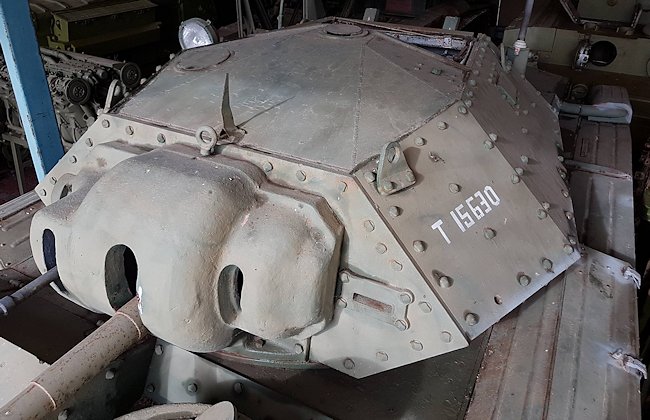
Crusader MkI tank turret with slopping armour. (Photo: Jimy Sharp)
'Spent shell case bag dropped off 2 Pdr. and Bill not realizing what had happened put his right arm through the recoil guard to pull the trigger - stopped just in time by Roy. Went round in further two or three circles firing at enemy with 2 Pdr. as Besa practically U /S. Enemy still firing at us and shots thudding into us all around but with no apparent effect. Realized by now we could achieve nothing by remaining there as rest of Squadron had retired except for ourselves and tanks K.O.'d. So we tried to make progress by stopping and reversing then forward again trying to cover up by firing smoke, but found ourselves jinking even nearer the enemy than before. '
'Right track went over trench and the engine raced so I assumed that track had broken too so put her out of gear. The Count by this time was suffering the effects of the concussion from his encounter with the periscope. He was acting in a dazed manner and kept putting his head out of the turret. Every time he did so another volley of shots hit into our rear which by this time luckily was between us and the opposition. One shot hit turret roof hatch causing a metal splinter to hit the Count on the back of his hand piercing a vein. Blood spurted out until Roy bandaged it up with a strip of clean Tour by two' gun cleaning cloth. '
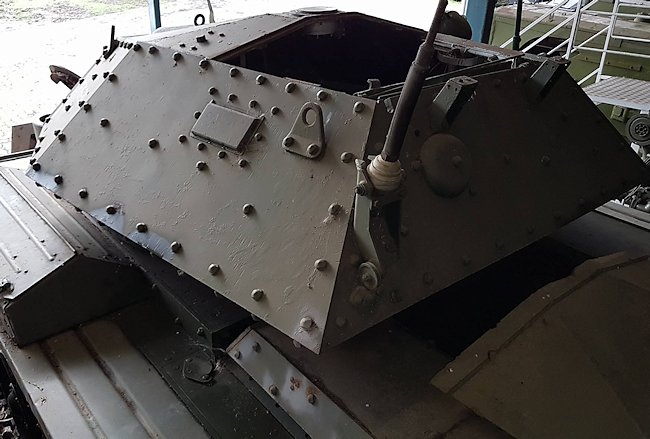
Rear view of a Crusader MkI tank turret (Photo: Jimy Sharp)
'We now realized our only chance of getting out alive was to 'lie doggo' until dark and then make a break for it. Switched off the engine and we settled down to wait until dark. Roy endeavouring to keep Count quiet with Times Book of Crosswords and other diversions. Rum passed round and Count said we could smoke (I had already smoked about ten!). '
'Suddenly spotted Scout Car on horizon making for us - new officer from H.Q. inside, who came alongside in a hail of m/g fire to t1Y to get us out. This was absolutely hopeless. Count told him to buzz off quick. Miraculously he got away O.K. '
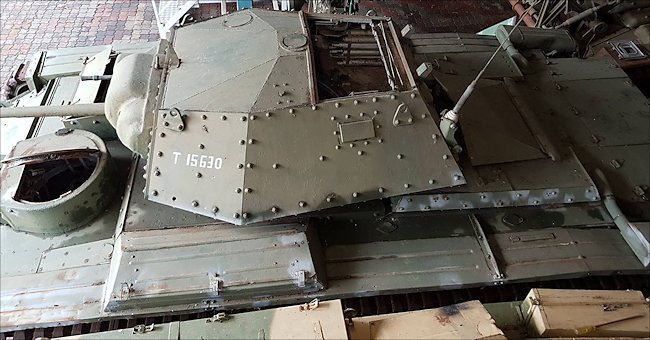
Top view of a A15 British Crusader MkI tank (Photo: Jimy Sharp)
'It should be explained here that although the rear of the tank was towards the enemy, our turret, the front of which had the thickest armour plating, was facing them. Leslie could see back the way we had come, which IS how he spotted the approach of the Scout Car. This episode brought a fresh barrage from the enemy and several more hits were received in the engine compartment which must have finally put it out of action. '
'Roy on the air to Capt. Cameron and told him our situation. He told us to get out if we could, but if not to be quiet! - that was our intention anyway! Occasional shots still ricocheting off us or going into the engine. Passed the time getting haversacks filled with rations and water bottles ready. Eventually made a plan of action for our getaway at dark which would be about 18.00 hrs. Sat waiting and praying that nothing would come through our armour plating. '
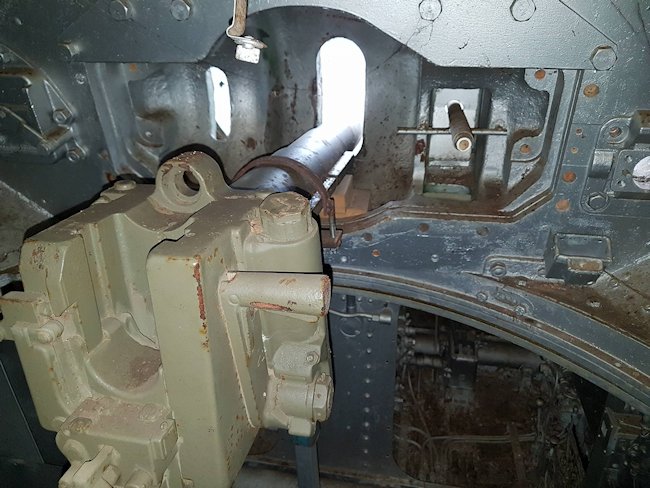
The A15 British Crusader MkI tank was armed with a 2 pounder quick firing (2pdr QF) 40mm main gun that only fired AP armour piercing rounds. (Photo: Jimy Sharp)
'17.00 hrs. Things had quietened down considerably and we were beginning to think we could get away with it when four Italians came towards us signaling for us to get out. Hasty consultation in the turret and Count said to give ourselves up - which was the only thing we really could do - and he accordingly waved his map-case out of the turret. We piled out of the tank and had our revolvers taken off us. '
'When we had climbed out of the tank the first question we were asked was 'are you Australian?' Something in the questioner's tone of voice prompted a swift 'No'. We were only too well aware that the Aussies had given the Italians a hard time in the course of Wavell's advance ten months previously and there were obviously some scores waiting to be settled! We were marched to their camp (Italians') and stuck in a hut with a few RGH (Royal Gloucestershire Hussars).
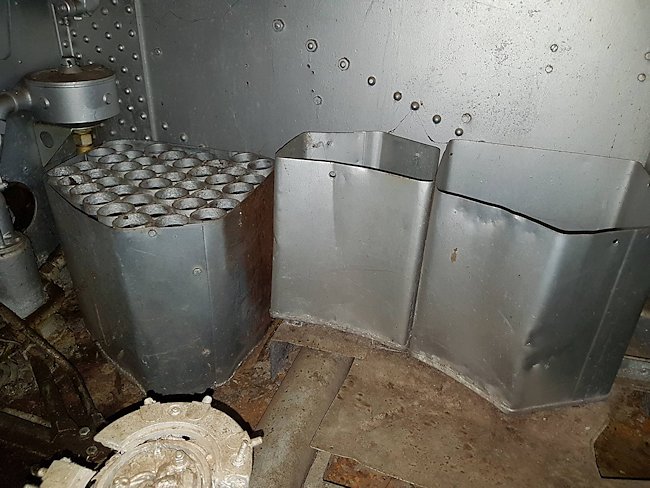
The AP shell ammo rack inside a A15 British Crusader MkI tank. (Photo: Jimy Sharp)
Shortly afterwards, Luke Davis and Geoff Ravenor were brought in, followed by Tommy Orme and (2/Lt) 'Slim' Somervell from a Dressing Station, both wounded. Then Ted Evans and Dickie Gulliver arrived supporting Geoff Clarke who had been wounded in the foot. Learned from them that Don Cardy had been killed. We stayed about half an hour or so (just beginning to get dark) and were then all piled into a lorry which set off into the desert which was the start of our journey to a POW camp in Italy. '
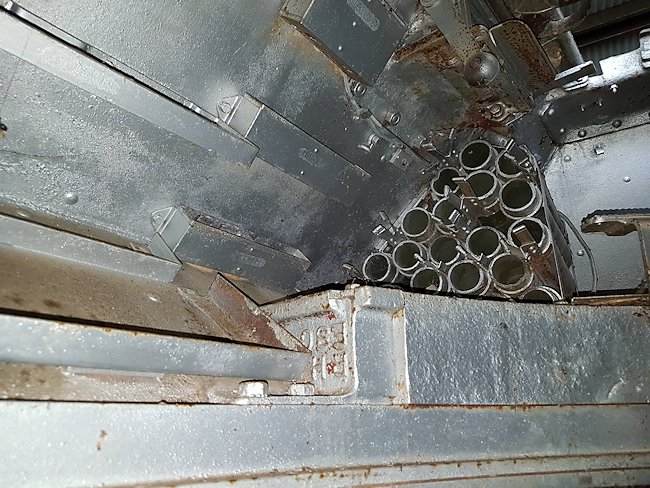
An additional AP shell ammo rack inside a A15 British Crusader MkI tank. (Photo: Jimy Sharp)
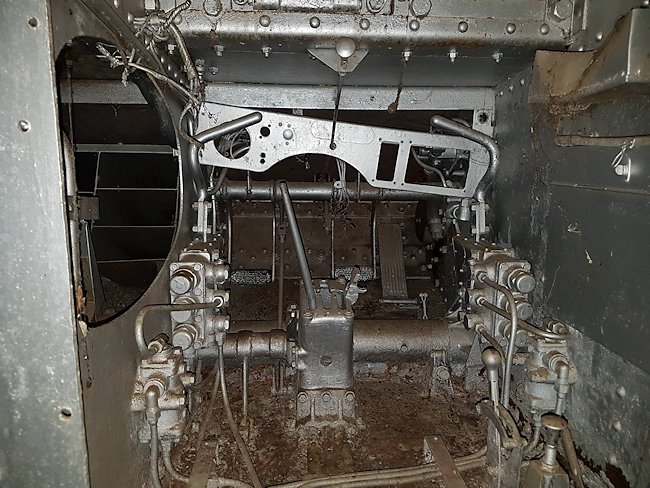
The driver's position inside a A15 British Crusader MkI tank. (Photo: Jimy Sharp)
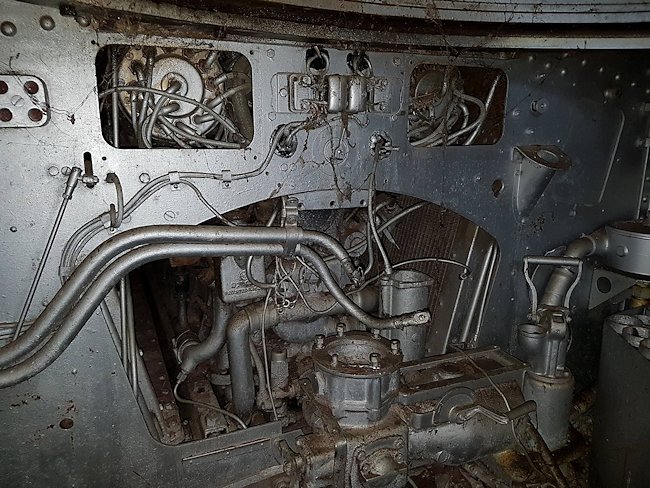
The A15 British Crusader MkI tank was powered by a Nuffield Liberty 27-litre V-12 petrol engine that produced 340 hp. (Photo: Jimy Sharp)
Where can I find other preserved Crusader Tanks?
- Crusader Mk I - National Railway Museum, Shildon, County Durham
- Crusader Mk I - Royal Australian Armoured Corps Tank Museum, Puckapunyal, Australia
- Crusader Mk II - IWM Duxford
- Crusader Mk II - Royal Jordanian Tank Museum, Jordan
- Crusader Mk II - National Museum of Military History, Johannesburg, South Africa
- Crusader Mk II - Light Horse Regiment, Kelvin, Johannesburg, South Africa
- Crusader Mk II - Moth Hall, Florida Dardanelles, Johannesburg, South Africa
- Crusader Mk II - Moth Hall, Brenthurst, Johannesburg, South Africa
- Crusader Mk II - Moth Hall, Roodepoort Chilly Trench, Johannesburg, South Africa
- Crusader Mk II - Dam Snake Park, Hartebeespoort, NW Province, South Africa
- Crusader Mk II - Cosy Corner Shellhole, Brakpan, Gauteng province, South Africa
- Crusader Mk II - Warrior Shellhole, Muldersdrift, Gauteng province, South Africa
- Crusader Mk II - Group 15 HQ, Thaba Tswane, Pretoria, Gauteng province, South Africa
- Crusader Mk II - Pretoria Regimental base, Salvokop, Pretoria, Gauteng province, South Africa
- Crusader Mk II - 2x School of Armour Museum, Tempe, Bloemfontein, Free State provinve, South Africa
- Crusader Mk II - Special Services Battalion Museum, Tempe Bloemfontein, Free State province, South Africa
- Crusader Mk II - Stored at Hogsville, Free State province, South Africa
- Crusader Mk II - Collings Foundation Collection, California, USA
- Crusader Mk II 17-pounder gun-tractor - National War and Resistance Museum, Overloon, Netherlands
- Crusader Mk III - Tank Museum, Bovington, Dorset, England
- Crusader Mk III wreck - El-Alamain War Museum, Egypt
- Crusader Mk III - National Armor and Cavalry Museum, Fort Benning, GA, USA
- Crusader Mk III AA (Anti-Aircraft) - Musée des Blindés, Saumur, France
- Source - Pierre-Oliver Buan - http://the.shadock.free.fr/Surviving_Panzers.html
Crusader Tank book
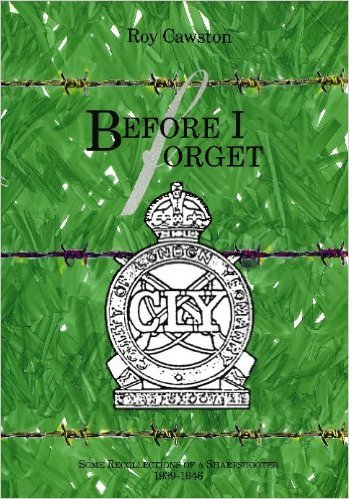 Buy it now
Buy it now